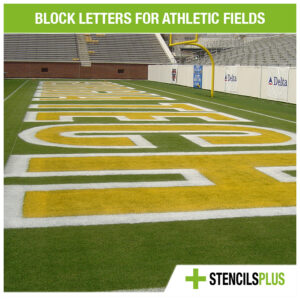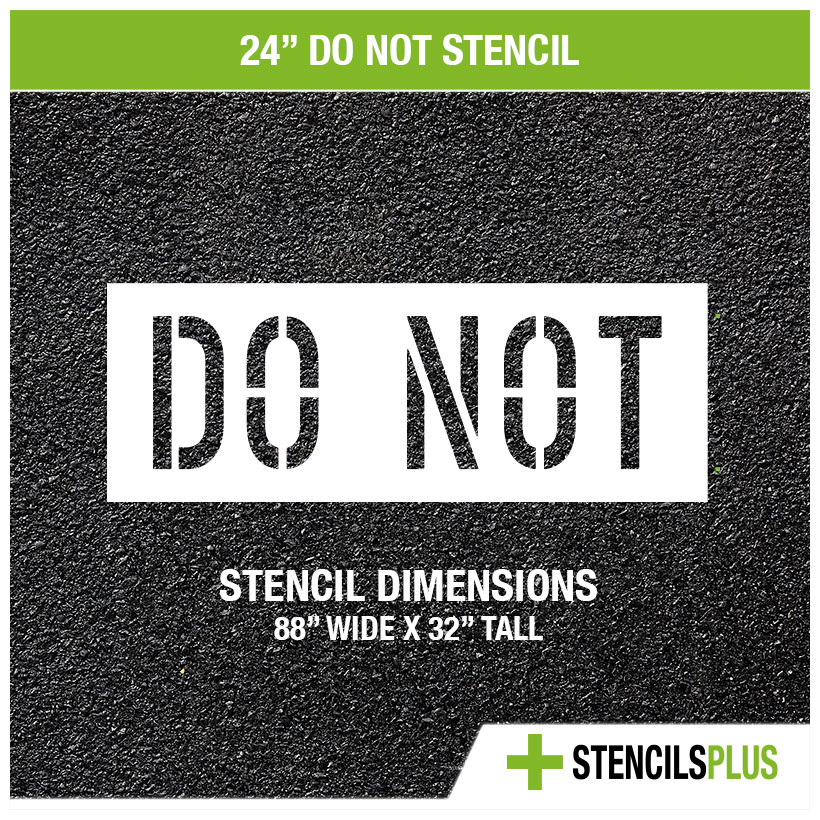Parking lot stencils are a critical part of your line striping work, so take care of them, and they will provide you with years of use. With proper care and storage you will extend the life span of your parking lot stencils, and save your hard-earned dollars. Here is what you need to know to get the best bang for your stenciling buck.
Why And How To Remove Paint
If you’re just going to keep getting paint on them over and over again, you may think it’s pointless to clean the paint off.
The reality is that as the paint builds up, it’s going to get thicker and thicker, and you’ll lose the crisp, clean, and professional result you were getting when the parking stencils were new. The edges lose their sharp edges and become blotchy with paint drips.
Most times with durable polyethylene parking lot stencils, you can easily peel the paint off once it has dried. Otherwise, use the appropriate cleaner for your paint type and a cloth to gently remove the stuck-on paint.
Handle With Care
When you’ve paid for professional-grade 1/8 inch thick templates, you’ve done so because you know they won’t rip or tear easily. Still, people have a tendency to stack their parking stencils all together in one pile. When it comes time to pull one out, the cut-out portions can hook into the neighboring templates. Impatience or a moment’s carelessness can cause damage. Consider having sheets of cardboard in between each one so they can’t hook into each other and cause premature wear and tear. For even better safety, have plywood on either side of your package of parking lot stencils, so there’s protection against bending when loading and unloading your equipment.
Safe Storage
Remember, a good quality template is flexible so it sits flush on the pavement, and isn’t in danger of snapping and cracking like it would if it were made from a hard inflexible material. That means it will need some support if you decide to store them upright. Otherwise you’ll have it flexing and bending while it leans up against the wall. Again, a couple of pieces of plywood to ensure it stays upright and flat will greatly extend the life of your parking stencils.
The Most Important Things To Know About Parking Lot Stencils
At the end of the day, investing in a quality product makes all the difference to your ability to clean, handle and store your templates. The key things to look for are:
- Thickness – For stenciling work, 1/8 inch thickness is the professional standard. This gives you the best in durability and clean crisp lines.
- Flexibility – Rigid material is prone to cracking and breaking, as well as not sitting properly on pavement. Let’s face it, surfaces that need stenciled are rarely perfectly flat (indoor concrete is an exception here, of course.) Choosing a high-quality template made from virgin (i.e. not recycled) plastic means that it can flex and bend without leaving white ‘memory’ marks in the plastic.
- Smooth Surface – For easy-to-clean templates you want smooth surfaces, not rough ones. If you had parking stencils that were rough and impossible to clean, after a few coats of paint, they’d be gummed up and would give you uneven fuzzy edges.
- Heft – We’re not talking super-heavy weight here, but parking lots stencils need to be heavier than cardboard. Otherwise the wind will shift them while you’re trying to paint, or the edges will lift with the pressure of the paint spray. Plus, with a bit of heft to them, they conform to the surface far better.
Parking stencils are like every other product out there; you get what you pay for.Using cheap or makeshift templates will give you a result that looks cheap and makeshift. Not only should you invest in quality parking lot stencils, invest the time in cleaning, handling and storing. That way you will get years of use from your parking stencils.





Leave a comment